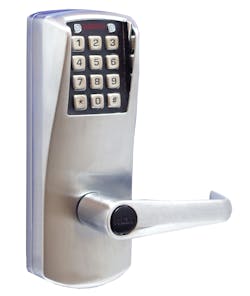Kaba Whitepaper: Single-Door Access Control Solutions for the Healthcare Market
Editor’s Note: The following information is taken from the Executive Summary and Conclusion of this newly released Whitepaper from Kaba. Download Kaba’s Whitepaper in its entirety as a pdf file at www.locksmithledger.com/12034338
As hospital and healthcare organizations expand and facilities enhance their level of care, there is a growing concern for increased security threats, including assaults, larceny and thefts, vandalism, data breach, and network intrusion. According to the 2012 Crime and Security Trends Survey, the number of crimes in hospitals increased by nearly 37 percent in just two years from just under 15,000 incidents to more than 20,500 in 2012. Note this survey was underwritten by the Foundation of the International Association for Healthcare and Security and Safety (IAHSS).
There are guidelines in place which mandate varying levels of security under some “environment of care” standards. However, decisions on which/what type of security solutions are determined at the individual healthcare facility level.
Historically, healthcare facilities managed access control with either keyed locks or mechanical pushbutton locks. However, with a surge in security issues, many hospitals and healthcare facilities are moving/have moved away from traditional access control technology to integrated access control systems. An integrated system enables a hospital or healthcare facility tight control over access in the building as well as outlying buildings and offers the ability to tap into CCTV system monitoring, accommodate time and attendance systems, integrate with infant abduction systems, access computers, and provide cashless vending.
However, because the cost per door of an integrated system is high, proper due diligence is required to determine if doors/access points are essential or non-essential to the integrated system. Accurately classified access points will help minimize the overall cost of an access control system and maximize its effectiveness.
Existing door locks that remain on non-essential doors—over time and with great usage—will require replacement. Multiple solutions are available in the market; however, as hospitals and healthcare facilities seek to reduce costs, a sustainable access control product could help achieve cost reduction objectives while meeting security standards and HIPPA compliance.
This white paper will discuss the following four areas that hospitals need to consider when implementing access control products:
- Integrated access control vs. single door solutions
- Sustainability trends
- HIPPA and access control
- Cost factors
Conclusions
Security is not an amenity, but an expectation among staff, patients, and visitors. Hospitals and healthcare facilities must seek access control solutions that balance the security of their staff and patients with cost effective products—and if the solutions match with Green/LEED initiatives, then healthcare organizations gain the additional dividend.
On non-essential doors or stand-alone access points, the PowerPlex 2000 provides hospitals and healthcare facilities an ideal access control solution that:
- Supports sustainability with the elimination of batteries
- Meets security and HIPPA requirements
- Offers significant cost savings over a conventional keyed door lock
- Allows a simple upgrade path to electronic access control
